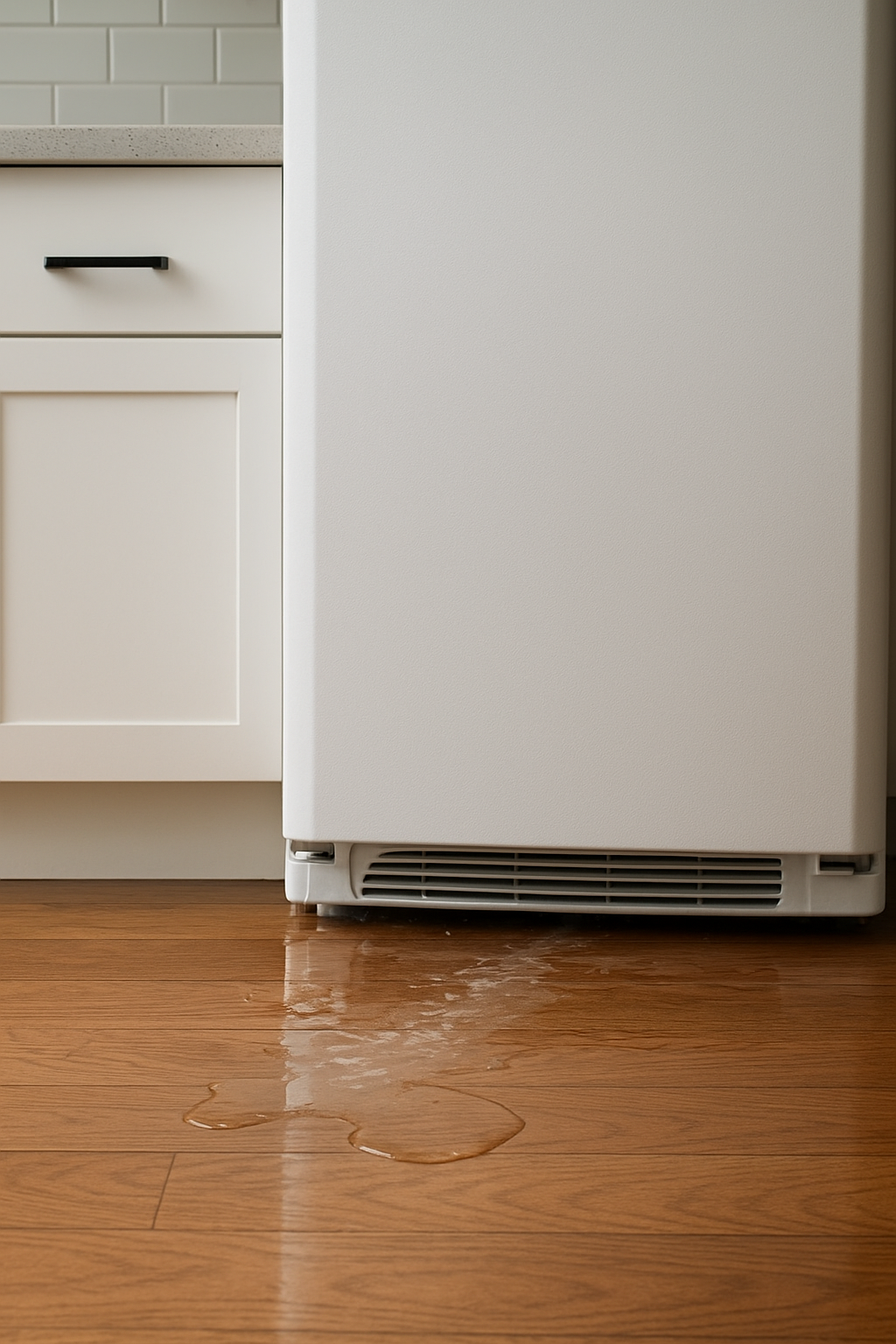
Why Is My Refrigerator Leaking?
Share
Common Causes and Simple Fixes for a Dry, Efficient Fridge
A leaking refrigerator can be more than just a nuisance—it can lead to water damage, mold growth, and wasted energy. Thankfully, most leaks are caused by a few common issues that can be easily identified and fixed. Here’s a breakdown of the most likely causes and how to address them.
1. Clogged or Frozen Defrost Drain
Cause:
Over time, food debris or ice can block the defrost drain. When this happens, melted frost from the defrost cycle can’t drain properly and instead pools inside the fridge or leaks onto the floor.
Solution:
Unplug the refrigerator and locate the drain hole—usually found at the back or bottom of the freezer compartment. Use warm water and a small funnel or turkey baster to flush it out. If ice is present, gently melt it using a hairdryer on low heat.
2. Faulty or Misaligned Water Supply Line
Cause:
Refrigerators with ice makers or water dispensers rely on a water line for supply. If the line becomes loose, cracked, or disconnected, it can cause leaks behind or beneath the appliance.
Solution:
Pull the refrigerator away from the wall and inspect the water line connections. Tighten any loose fittings and check for cracks or wear. Replace damaged tubing with an OEM water line to ensure durability and compatibility.
3. Damaged or Clogged Drain Pan
Cause:
The drain pan collects condensation and defrost water underneath the fridge. If it’s cracked or full, water may overflow onto the floor.
Solution:
Locate the drain pan beneath the refrigerator (you may need to remove the grille). Empty and clean it using warm, soapy water. If it’s cracked or warped, replace it with an OEM drain pan that matches your model.
4. Excessive Condensation from Worn Door Gaskets
Cause:
If the refrigerator door doesn’t seal tightly, warm air can enter and cause condensation buildup that eventually drips onto shelves or the floor.
Solution:
Check the gasket (rubber seal) around the doors for cracks, tears, or looseness. Clean it with warm water and mild soap to remove dirt or grease. If damaged, replace it to restore a tight seal.
5. Improper Leveling
Cause:
If your refrigerator isn’t sitting level, water from the defrost system might not flow correctly into the drain pan. Instead, it can pool inside the unit or leak onto the floor.
Solution:
Use a level to check the refrigerator’s position. Adjust the front leveling legs until the fridge tilts slightly backward—this helps the doors close properly and directs water toward the drain.
6. Cracked or Leaking Ice Maker Components
Cause:
A broken ice maker fill tube or inlet valve can cause slow leaks that are hard to notice until water appears under or behind the fridge.
Solution:
Inspect the ice maker tubing and inlet valve for cracks or mineral buildup. Replace any damaged components with OEM parts designed for your refrigerator’s make and model.
When to Call a Professional
If you’ve checked all these areas and the leak continues, there may be an internal component failure—such as a defective defrost timer, sensor, or evaporator coil issue. In that case, contact a qualified appliance repair technician.
Keep Your Refrigerator Running Like New
Regular maintenance—such as cleaning the coils, checking seals, and clearing the defrost drain—can prevent most leaks before they start.
Visit PRS Parts Inc. at 540 Lagoon Dr. for authentic OEM refrigerator parts and expert repair assistance to keep your appliance in top shape.
